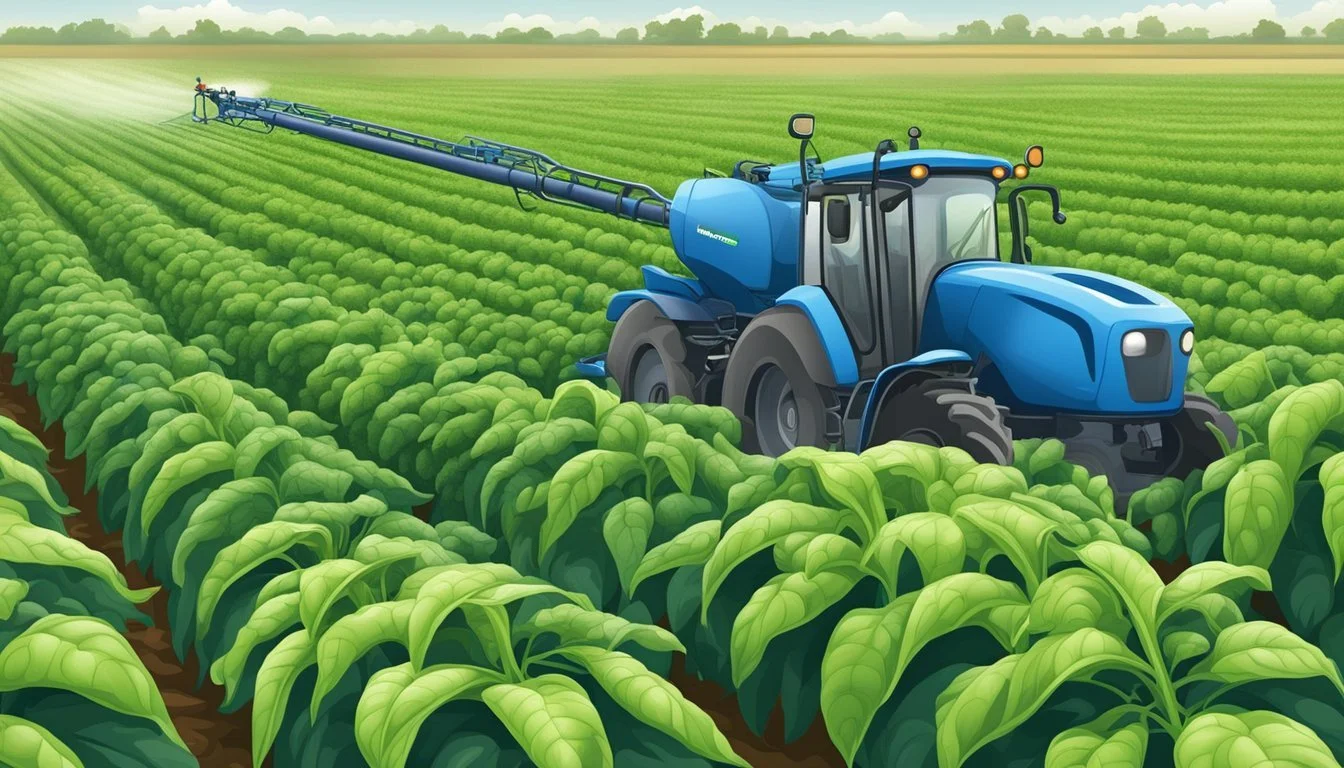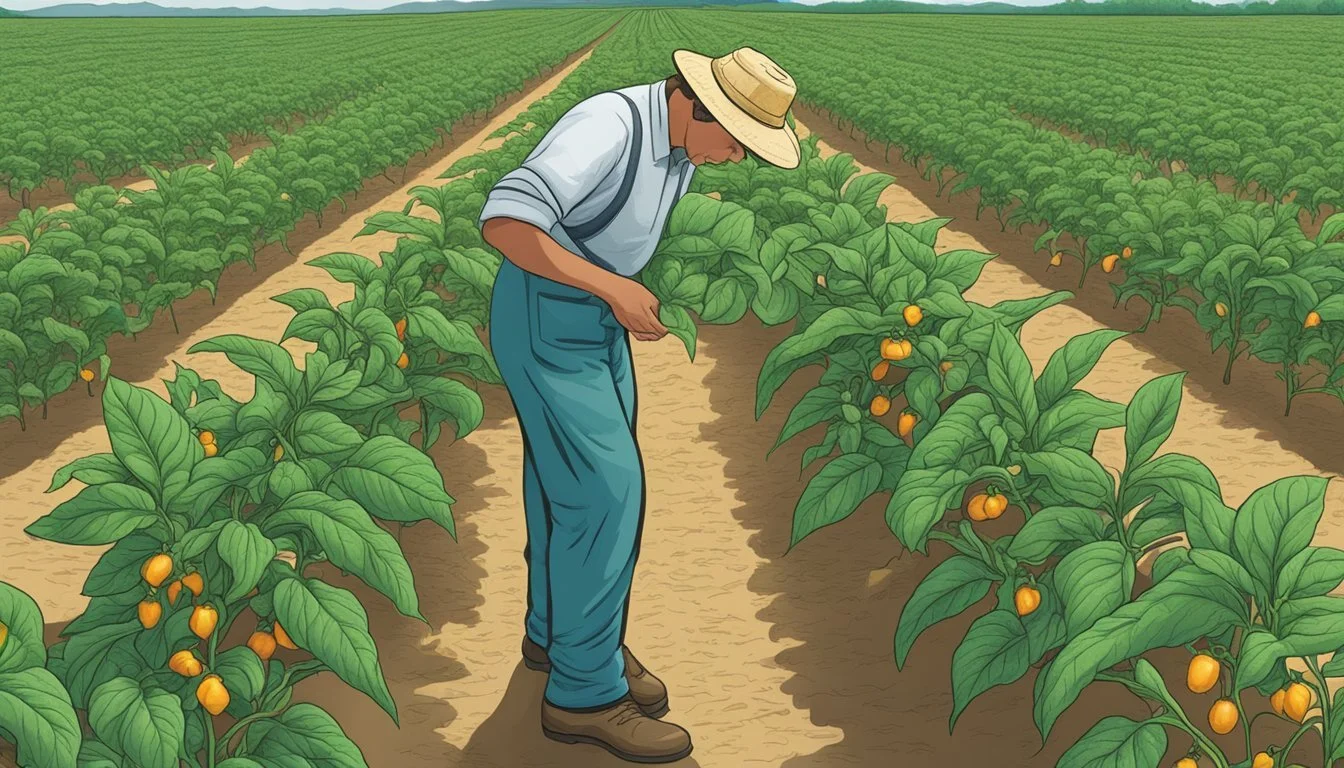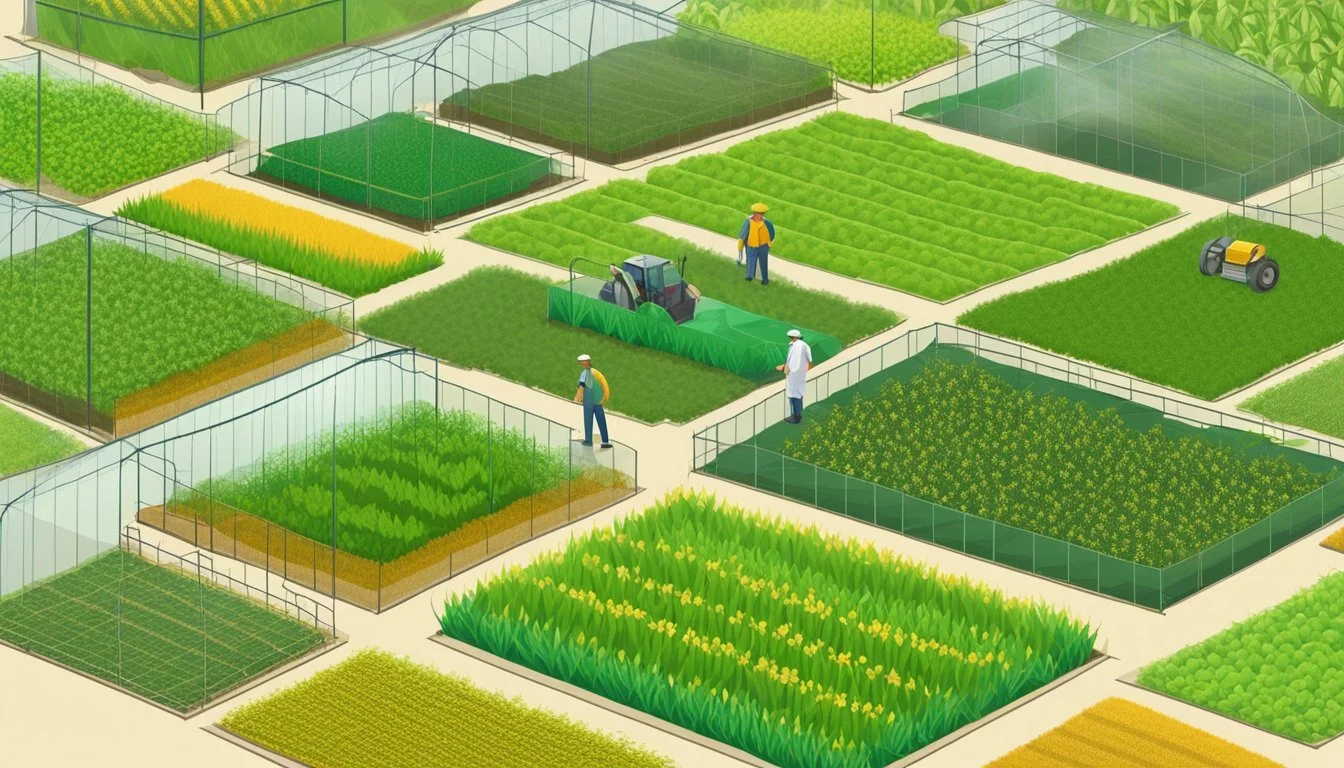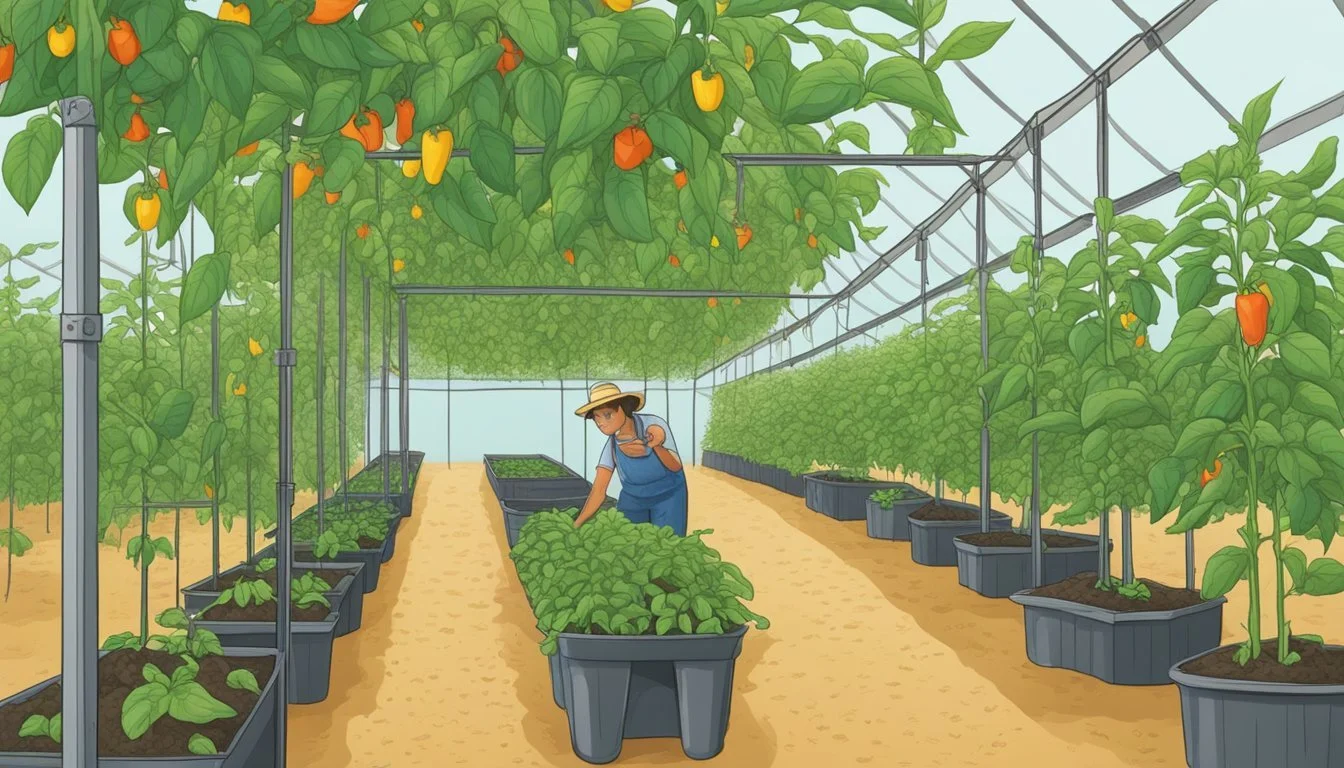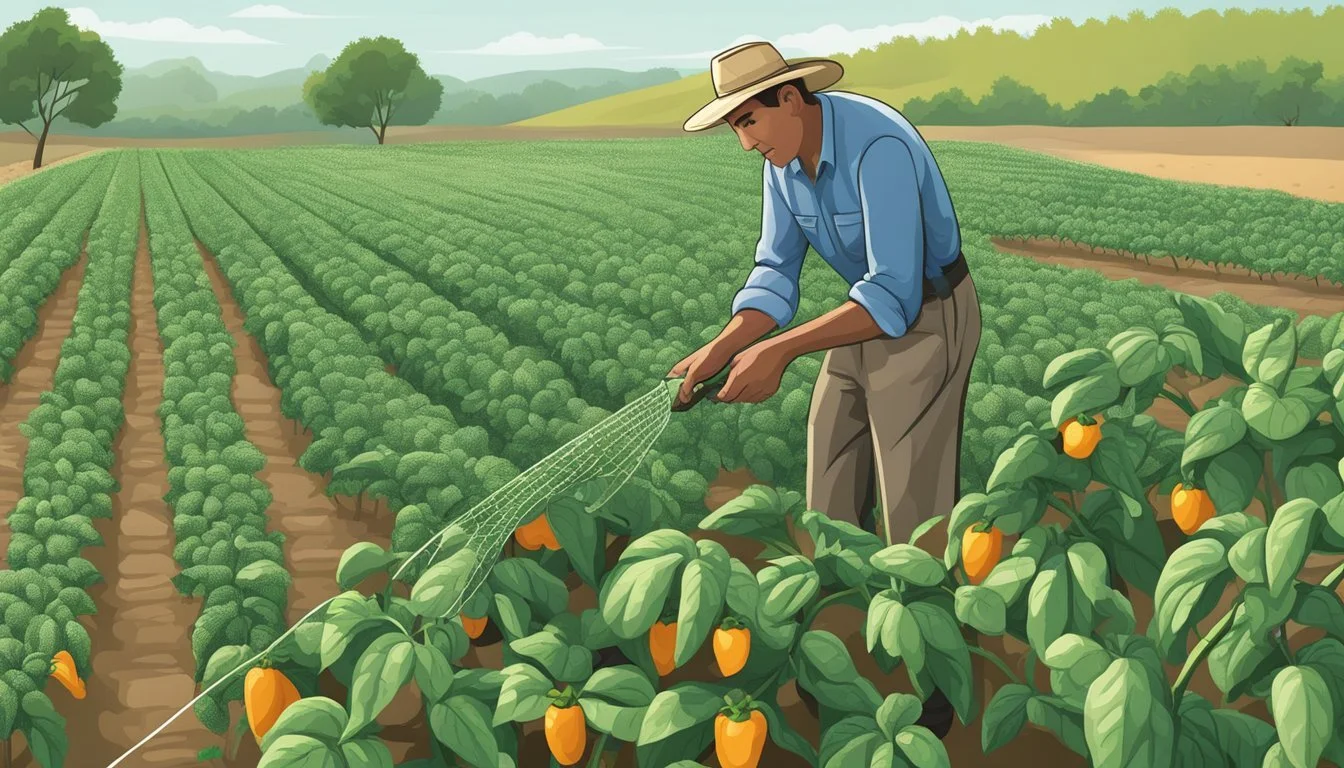Protecting Crops from Pepper Weevils
Effective Strategies for Management
Pepper weevils, known scientifically as Anthonomus eugenii, are notorious pests among growers, posing a significant threat to pepper crops. These beetles specifically target peppers, laying eggs on the fruit which leads to infestations that can devastate yields. Effective management strategies focus on early detection and integrated pest management tactics to mitigate the damages caused by these resilient insects.
As they primarily feed and reproduce on solanaceous plants, a thorough understanding of their lifecycle and habits is essential for controlling outbreaks. The adult weevils are particularly drawn to flower buds and young fruit, where they make punctures to feed and create cavities for egg deposition. The resulting larvae feed within, causing the fruit to drop prematurely and significantly reducing crop quality and quantity.
Given the consequential nature of pepper weevil infestations, agricultural professionals emphasize the importance of a vigilant, proactive approach. This includes regular field scouting, timely application of controls, and ensuring crop debris is properly managed or destroyed to prevent overwintering of the pest population. With a comprehensive approach, the impact of pepper weevils on crops can be significantly reduced, safeguarding the livelihoods of farmers and the supply of these valuable crops.
Pepper Weevil Identification
Proper identification of the pepper weevil, Anthonomus eugenii, is crucial for effective pest management. These pests can cause significant damage to pepper crops, so understanding their appearance and development stages is essential for controlling their population and reducing crop mortality.
Recognizing Adult Weevils
Adult pepper weevils are small beetles, typically measuring around 1/8 inch in length. They are mostly black or brown with a pronounced snout. Farmers can identify them by the white or yellowish patches on their wing covers, which are unique to this species.
Lifecycle and Development
Eggs: The lifecycle of the pepper weevil begins when the female lays eggs on pepper flowers, buds, or fruit. The eggs are yellowish and oval, becoming more orange as they mature.
Larvae: After hatching, the larvae are white or yellowish grubs with brown heads. They usually feed inside the pepper fruit, remaining hidden from view.
Pupa: The larval stage progresses into the pupal stage inside the pepper fruit. The pupa resembles the adult in shape but is encapsulated in a cocoon-like structure.
Adults and Offspring: After emerging as adults, the weevils can cause considerable damage by feeding and laying eggs, perpetuating the cycle. A single generation can develop in just over one month under optimal conditions, leading to multiple generations within a single growing season.
Knowledge of the pepper weevil life cycle is essential for timely intervention measures to curb their proliferation and protect crops effectively.
Monitoring and Scouting Techniques
Effective management of pepper weevils relies on early detection, which is achieved through diligent monitoring and scouting techniques. These strategies help farmers assess the presence of pepper weevils and determine the need for intervention to protect their crops.
Pheromone-Baited Traps
Pheromone-baited sticky traps are a cornerstone for detecting the initial weevil populations in pepper fields. Placing these traps around the perimeter and inside the crop area optimizes the chances of capturing adult weevils. For accurate monitoring, traps should be checked regularly, typically twice a week, which can reveal trends in weevil activity and alert growers to potential infestations.
Visual Inspection Methods
Visual inspection methods complement pheromone traps, providing an up-close look at weevil activity. Farmers and scouts should examine a variety of plant parts, including flowers, fruit, and leaf buds, as adult weevils tend to feed on these areas. Any signs of weevils, such as feeding damage or egg-laying sites, indicate an immediate need for action. Additionally, randomly inspecting a set number of plants across the field ensures that less conspicuous infestations are not overlooked.
Predicting Infestation
Predicting infestation levels involves analyzing the data from pheromone traps and visual inspections and comparing it against established thresholds to determine if control measures are necessary. This proactive approach helps in forecasting the rise in weevil populations and timing control applications before significant damage occurs. It is critical for managing the pest effectively while minimizing unnecessary interventions.
Preventive Cultural Practices
To protect pepper crops from the pepper weevil, certain preventive cultural practices are essential. Incorporating field sanitation, rotating crops, and using reflective mulches can significantly reduce the occurrence of this pest.
Field Sanitation
Field sanitation is critical in preventing the life cycle of the pepper weevil from continuing. It involves the removal and destruction of infested fruits and plant debris, where pepper weevils might overwinter. Regular inspection and sanitation practices are particularly necessary at the end of the harvest season to prevent the pepper weevil from becoming established in the area. According to the University of Florida, rigorous sanitation practices can disrupt the life cycle of the weevil.
Crop Rotation
Crop rotation is an effective strategy to manage pepper weevil populations. Rotating peppers with crops not host to the weevil, especially those that are not members of the Solanaceae family, can prevent the successive generation of weevils. It is suggested to have a rotation interval of at least two years before peppers are grown again in the same field. Such a practice can significantly lessen the buildup of pests and diseases.
Reflective Mulches
Another method to deter the pepper weevil is the use of reflective mulches in the field. These mulches confuse and repel adult weevils, reducing their ability to locate pepper plants. The use of reflective mulches is particularly beneficial in greenhouse pepper crops, where pepper weevil infestations can severely impact production. Reflective materials laid out on the soil surface around the pepper plants are an effective means to safeguard the crops from this pest.
Biological Control Strategies
In the arena of pest management, focusing on biological control strategies offers an environmentally-friendly alternative to chemical insecticides. These approaches harness naturally occurring enemies of pests to limit or eliminate the infestations in pepper crops.
Parasitic Wasps and Predators
Parasitic wasps, such as Jaliscoa hunteri, target the pepper weevil specifically. This tactic involves the introduction of these wasps into the crop environment, where they parasitize the weevils, thereby inhibiting their ability to reproduce and reducing their populations over time. As biological control agents, these small but mighty allies can be an especially effective line of defense against the pepper weevil.
Beneficial Insects Introductions
The introduction of beneficial insects includes a broader range of biological control agents, not limited to parasitic wasps. These can include predatory beetles or mites that prey on the weevil larvae and eggs. Implementing this strategy requires understanding the ecology of the pepper weevil and ensuring that the introduced predators can thrive in the same environmental conditions, avoiding any unintended consequences to the existing ecosystem balance.
Chemical Control Measures
Chemical control measures remain a critical component in the fight against crop-damaging pests like pepper weevils. Using chemical insecticides effectively requires understanding their application and limitations, as well as considering alternatives to traditional chemical methods.
Insecticide Use and Resistance
Insecticides, such as carbaryl, permethrin, and pyrethrin, are often employed in combating pepper weevils. Carbaryl, known for its broad-spectrum activity, can be used during various growth stages of the pepper crop, targeting the adult weevils. Permethrin and pyrethrin, derivatives of natural pyrethrins found in chrysanthemum flowers, are favored for their effectiveness and relative safety towards mammals. However, their overuse can lead to the development of insecticide resistance. It is crucial these insecticides are used judiciously, rotating between products with different modes of action to prevent resistance build-up.
Alternatives to Traditional Insecticides
While chemical insecticides are widely used, alternatives such as biopesticides and insect growth regulators offer environmentally friendly solutions. Biopesticides include naturally occurring substances that control pests, minimizing the risk of resistance and non-target effects. They work by interfering with the life cycle of the pepper weevil without the collateral damage associated with traditional pesticides. Insect growth regulators, which are not traditional insecticides, disrupt the development and reproduction of the pest. These alternatives can be incorporated into integrated pest management (IPM) programs to reduce the reliance on chemical pesticides and delay the onset of resistance.
Advanced Control Techniques
In the realm of agricultural pest management, advanced control techniques are essential for combating the persistent issue of the pepper weevil. These methods leverage scientific innovation to provide targeted and environmentally conscious solutions.
Sterile Insect Technique
The Sterile Insect Technique (SIT) is a form of biological control which involves releasing mass-reared, sterilized insects into the environment. This technique aims to reduce pepper weevil populations by ensuring that any mating with the sterilized insects does not produce offspring. Research suggests that SIT, which has been effective against other pests such as the cotton boll weevil, is now being applied to pepper weevils, demonstrating a promising avenue for future pest control strategies.
Genetic Modification Approaches
Genetic Modification Approaches refer to the alteration of an organism's genetic material to achieve desired traits such as pest resistance. While this is a more complex and controversial area of pest management, genetic engineering has the potential to develop pepper plants that are inherently resistant to weevils, thus minimizing the need for chemical pesticides.
Radiation Dose for Weevil Sterilization
Properly administered Radiation Dose plays a pivotal role in the sterilization process of pepper weevils. Partnerships, such as that between Bruce Power and Nordion Inc, focus on providing the necessary gamma radiation, crucial for the sterilization efficacy in SIT. This radiation must be carefully calibrated to the specific pest to induce sterility without affecting the viability of released insects. Researchers like Jacob Basso have been exploring the right doses that would ensure maximum efficacy for the technique.
Impact of Infestation on Crops
Pepper weevils pose a significant threat to the yield and quality of capsicum plants, causing substantial crop damage and financial losses for growers.
Yield Loss Assessment
Capsicum plants are particularly vulnerable to pepper weevil infestations, which can trigger yield losses of up to 90%. Infested crops produce fewer and smaller pods or fruit, directly impacting the livelihoods of fruit and vegetable growers across Canada. The Fruit and Vegetable Growers of Canada have noted the severity of the situation, as the weevils' larvae compromise the flowers and immature fruit, leading to a reduced harvest.
Quality of Produce Affected
The quality of produce is severely affected by pepper weevils; the Horticultural Crops sector has observed marked degradation in both the appearance and viability of capsicum. Infested fruit often shows entry or exit holes and internal damage, rendering them unmarketable and unsuitable for consumption. This not only diminishes the commercial value of the yield but also weakens the competitive stance of growers in both local and international markets.
Integrated Pest Management
Integrated Pest Management (IPM) is a holistic approach combining different methods for the effective control of pests such as the pepper weevil, while minimizing impact on the environment, human health, and non-target organisms. It emphasizes the use of comprehensive information on the life cycles of pests and their interaction with the environment. This information, in conjunction with available pest control methods, is used to manage pest damage by the most economical means.
Key Components of IPM for Pepper Weevil:
Monitoring: Regular scouting of crops helps detect early infestations of pepper weevils.
Identification: Properly identifying the pest ensures appropriate control methods are employed.
Strategies Employed:
Cultural Control: Practices like crop rotation and sanitation reduce pest habitats.
Biological Control: Beneficial insects that prey on or parasitize weevils are introduced or conserved.
Chemical Control: Pesticides are applied carefully, considering the economic threshold, which is the point at which the cost of pest damage exceeds the cost of treatment.
Agriculture and Agri-Food Canada supports research and development of sustainable IPM programs, which align with the goal of maintaining long-term sustainability and effectiveness in pest management. IPM strategies help farmers reduce their dependence on chemicals and focus on preventative measures and alternative control methods that contribute to environmental health and the economic stability of their operations.
Global and Regional Insights
In the realm of agriculture, the pepper weevil emerges as a focal pest, challenging crop protection efforts on both a global and regional scale. The insights pertinent to North America, and Central and South America reveal the complexity and significance of managing Anthonomus eugenii populations to safeguard pepper crops.
North American Perspective
In North America, especially within the United States and Canada, the pepper weevil poses a considerable threat to the pepper industry. It is most prevalent in the southern United States, spreading through commercial routes to areas like Canada where it impacts the greenhouse pepper sector. Recent studies have addressed the utility of the sterile insect technique as a novel management strategy that could enhance existing pest control methods in these regions. An example of this research has been conducted in Canada and is detailed in an article titled "Protecting the peppers: Unlocking the potential of the sterile insect technique".
United States
Economic impact: Significant, necessitates ongoing research.
Management methods: Broad spectrum insecticides, sterile insect technique investigations.
Canada
Status: Recently affected; greenhouse crops targeted.
Research focus: Adaptation of sterile insect technique for local use.
Central and South American Context
Central America and Mexico have battled with the pepper weevil for an extended period, with this pest being indigenous to the region. Management efforts in these areas are critical, as they can influence pest populations in bordering North American regions due to migration and trade. The pepper weevil has been a known pest in these locales for nearly a century, with Mexico being significantly affected due to its vast pepper production. The overview of this pest's impact is further explored in an academic paper on pepper weevil management, available here: "Overview of the Pepper Weevil".
Central America
Status: Endemic pest, longstanding issue.
Challenges: Effective management necessary to prevent spread.
Mexico
Relevance: Major pepper producer, thus highly concerned with weevil control.
Approach: Integration of insecticides, cultural practices, and regional cooperation for pest management.
Environmental and Regulatory Considerations
When managing pepper weevil infestations, it is critical to consider environmental impacts such as non-target effects and pollinator safety, alongside strict pesticide regulations designed to maintain sustainable agricultural practices.
Pesticide Regulations
Regulatory bodies closely monitor and control the usage of pesticides in agriculture to ensure environmental protection and public health safety. For pepper weevils, regulations may dictate permissible chemical solutions, usage rates, application methods, and timing to minimize detrimental effects. Farmers must adhere to the Environmental Protection Agency (EPA)'s guidelines which classify insecticides based on their environmental risk profiles and mandate the use of products that are effective against the pepper weevil while still being safe for the environment.
Non-Target Effects and Bee Safety
Non-target effects, including the impact on beneficial insects such as bees, are a major concern when using broad-spectrum insecticides.
Toxicity to Bees: It is essential to choose insecticides that minimize harm to bees and other pollinators, considering the toxicity of certain chemicals.
Sustainability: Strategies must incorporate sustainable methods, like integrated pest management (IPM), which can include biological controls and cultural practices that reduce reliance on chemical treatments.
By prioritizing both pesticide regulation compliance and non-target effects mitigation, farmers can protect their pepper crops from the pepper weevil in a way that safeguards the farm ecosystem, ensuring a sustainable approach to pest management.
Innovation in Weevil Management
Protecting pepper crops from the invasive pepper weevil has led to the development of novel strategies. Two methods have shown promise: the integration of gamma irradiation and the harnessing of pheromone technology.
Gamma Irradiation Methodology
Gamma irradiation is an innovative approach to manage the pepper weevil populations by disrupting their reproduction. With this method, pepper weevils are exposed to a controlled dose of gamma radiation, rendering them sterile. The objective is to release these sterile weevils into the environment, where they compete with wild males for mating but do not produce offspring, thereby reducing the population over time. This method showcases sustainability, as it reduces the need for harmful pesticides. Moreover, it's designed to minimize nontarget effects, ensuring that other beneficial species are not adversely affected.
Pheromone Technology
Pheromone technology exploits the weevils' own communication signals to manage their populations. This technology involves the use of synthetic pheromones as lures or disruptors. For effectiveness in mating disruption, the approach ensures:
High mating competitiveness by confusing the weevils and leading them away from the crops.
The sustainability trademark, as it uses the weevils’ natural behavior against them without the introduction of toxic substances.
It focuses on the specificity of pheromones to target only the pepper weevil, thereby avoiding unintended nontarget effects.
Both of these innovative management strategies provide environmentally friendly alternatives to traditional insecticides and contribute to the sustainable protection of pepper crops worldwide.
Industry Resources and Support
The fight against the pepper weevil is bolstered by a collaborative network of associations, research institutions, and government programs. These entities provide growers with access to advancements in pest management and support through various resources and tools.
Associations and Research Institutions
The University of Guelph and Agriculture and Agri-Food Canada are at the forefront of research, aiming to understand and mitigate the pepper weevil threat. They contribute by developing integrated pest management strategies and exploring innovative techniques like the sterile insect technique, enhancing the arsenal against this pest. Growers can turn to these institutions for scientifically-backed guidance and resources, ensuring they are equipped with the latest knowledge in weevil control.
University of Guelph: A leader in agricultural science, providing research on pepper weevil mitigation.
Agriculture and Agri-Food Canada: Engages in extensive research to support the agricultural industry, including studying pepper weevil behavior and control measures.
Government Programs
Government programs often offer financial assistance, training, and informational resources to support pepper growers in managing pest populations. The Fruit and Vegetable Growers of Canada is a notable organization that collaborates with government bodies to ensure that information on pest management, particularly for the pepper weevil, is disseminated widely and effectively. Availability of funds and resources through these programs is crucial for farmers facing the economic impact of pest damage.
Fruit and Vegetable Growers of Canada: They advocate for policies and programs that help in dealing with pests like the pepper weevil.
Government funding and support: Offers resources for pest control measures, providing financial aid and updated information to the growers.
Having these resources at hand helps the agricultural community remain confident in their fight against pests like the pepper weevil, preserving crop yields and the quality of peppers for consumers.
Practical Tips for Growers
When combating the pepper weevil, growers should consider an integrated approach that combines monitoring, physical barriers, cultural practices, and chemical controls. Here are some practical steps to help protect greenhouse crops and transplants:
Monitoring and Scouting:
Regularly inspect crops for signs of weevil activity.
Set up pheromone traps to detect the presence of adult weevils.
Cultural Controls:
Transplant selection: Ensure transplants are weevil-free before introducing them to the greenhouse.
Cleanliness: Remove plant debris and destroy cull piles promptly after harvest to eliminate weevil breeding sites.
Maintain weed control to prevent nightshade and other solanaceous weeds that can harbor weevils.
Physical Barriers:
Use fine mesh screens to limit pepper weevil access to greenhouse crops.
Chemical Controls:
If chemical intervention is necessary, apply insecticides according to label instructions. Begin applications at or before the first flower stage.
Regular Scouting: Check for weevils on terminals and flowers.
Transplant Inspection: Confirm transplants are free of weevils before planting.
Debris Management: Clean up crop residues and destroy cull piles immediately.
Perimeter Weed Control: Eliminate nightshade and similar weeds around greenhouses.
Mesh Barriers: Install screens to prevent entry into greenhouses.
Chemical Applications: Use insecticides responsibly, starting at first flower.
It's imperative for growers to remain vigilant as they manage pests such as pepper weevils. Implementing a combination of these strategies can mitigate losses and ensure the health of their crops.
Case Studies and Research
In the fight against the destructive pepper weevil, researchers and agricultural professionals have dedicated efforts to both understanding this pest and developing sustainable control strategies.
Successful Control Programs
University of Guelph is at the forefront, boasting a robust history of agricultural research. One exemplary figure in this domain is Jacob Basso, whose contributions have emphasized innovation in pest management. Studies coordinated by Basso have explored a variety of control methods, varying from insecticides to biological controls, reflecting a tailored approach to different geographic and climate constraints.
Emerging Research
A significant leap in managing pepper weevils is demonstrated through the adoption of the sterile insect technique. This area of research is showing promise, potentially revolutionizing the way growers protect their crops by reducing reliance on broad-spectrum pesticides. Additionally, recent case studies have examined the impact of various control products, quantifying their effectiveness and environmental impact through meticulous scrutiny in both laboratory and real-world greenhouse settings.
Frequently Asked Questions
In this section, readers will find answers to common questions about detection, prevention, and control methods for managing pepper weevil infestations, as well as understanding the damage these pests cause.
How can farmers detect the presence of pepper weevils on their crops?
Farmers can detect pepper weevils by inspecting their crops for oviposition scars on pepper buds or the base of young pepper pods, where female weevils lay eggs. The presence of larvae and adult weevils as well as damaged fruit indicates an infestation. Traps hung within the canopy of surrounding trees can also be useful in monitoring for pepper weevils.
What are the most effective prevention methods for pepper weevil infestation in commercial pepper farms?
To prevent pepper weevil infestation, farmers can implement sanitation measures such as removing plant debris and old fruit that can harbor weevils. They should also avoid planting next to fields previously infested and use perimeter trap cropping along with spot sprays as a tactical approach.
How can natural predators be used in the control of pepper weevil populations?
Integrating natural predators like big-eyed bugs, minute pirate bugs, and lady beetles into the ecosystem can help control pepper weevil populations. Conservation biological control involves managing the environment to enhance the effectiveness of these beneficial insects.
What cultural practices can help reduce the incidence of pepper weevils in pepper cultivation?
Utilizing crop rotation, proper field sanitation, and timely harvesting can reduce pepper weevil incidence. Ensuring there are no host plants for weevils to overwinter on or breed in adjacent to pepper fields is also crucial for mitigating the risk of infestation.
Which insecticides are approved and recommended for the control of pepper weevils?
Insecticides such as Vydate L are widely used and recommended for managing pepper weevils. A good scouting program is crucial, and applications should begin at or before first flower and continue until harvest for effective control.
What damage symptoms indicate a potential pepper weevil infestation?
Symptoms of a pepper weevil infestation include premature dropping of flower buds, "crescent-shaped" oviposition scars, holes in buds or fruit, and pepper pods with an internal breakdown due to larval feeding inside on the seed core or tissue of the pod wall.



